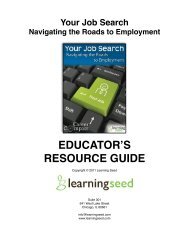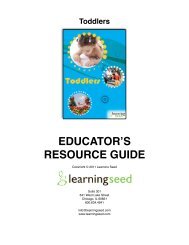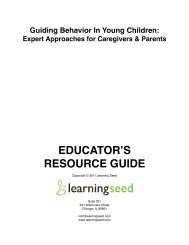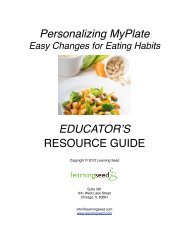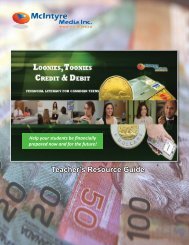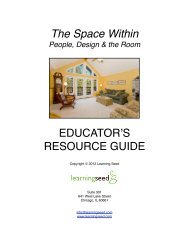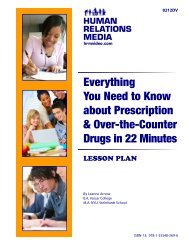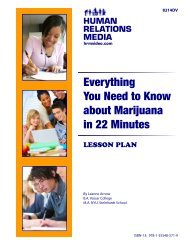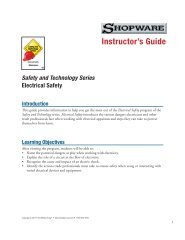EDUCATORʼS RESOURCE GUIDE - Learning Seed
EDUCATORʼS RESOURCE GUIDE - Learning Seed
EDUCATORʼS RESOURCE GUIDE - Learning Seed
Create successful ePaper yourself
Turn your PDF publications into a flip-book with our unique Google optimized e-Paper software.
Lesson Plan 2 (page 1 of 2)<br />
Purpose: " Define & Interpret Information<br />
Name: " Who Said That?<br />
Type: " Independent Practice<br />
Est. Length: " 40 minutes<br />
Lesson Summary<br />
As students watch A Child's Mind: How Kids Learn Right & Wrong they will complete Worksheet C, “Who Said That?”<br />
Student will write the name of a theorist that matches each stated moral development concept given.<br />
Lesson Materials<br />
• Copies of “Who Said That?” (Worksheet C in the Appendix)<br />
• Pen/Pencil<br />
• Notebook paper<br />
• Video: A Child's Mind: How Kids Learn Right & Wrong<br />
Lesson Objective(s)<br />
A Child's Mind: How Kids Learn Right & Wrong<br />
• Students will understand key concepts of the moral developmental theories of Jean Piaget, Lawrence Kohlberg,<br />
Carol Gilligan, Elliot Turiel, Albert Bandura, and theory of mind.<br />
• Students will know what critics had to say about each theoristʼs findings.<br />
• Students will compare and contrast various theories and theorists.<br />
10 Copyright 2011 <strong>Learning</strong> <strong>Seed</strong>




